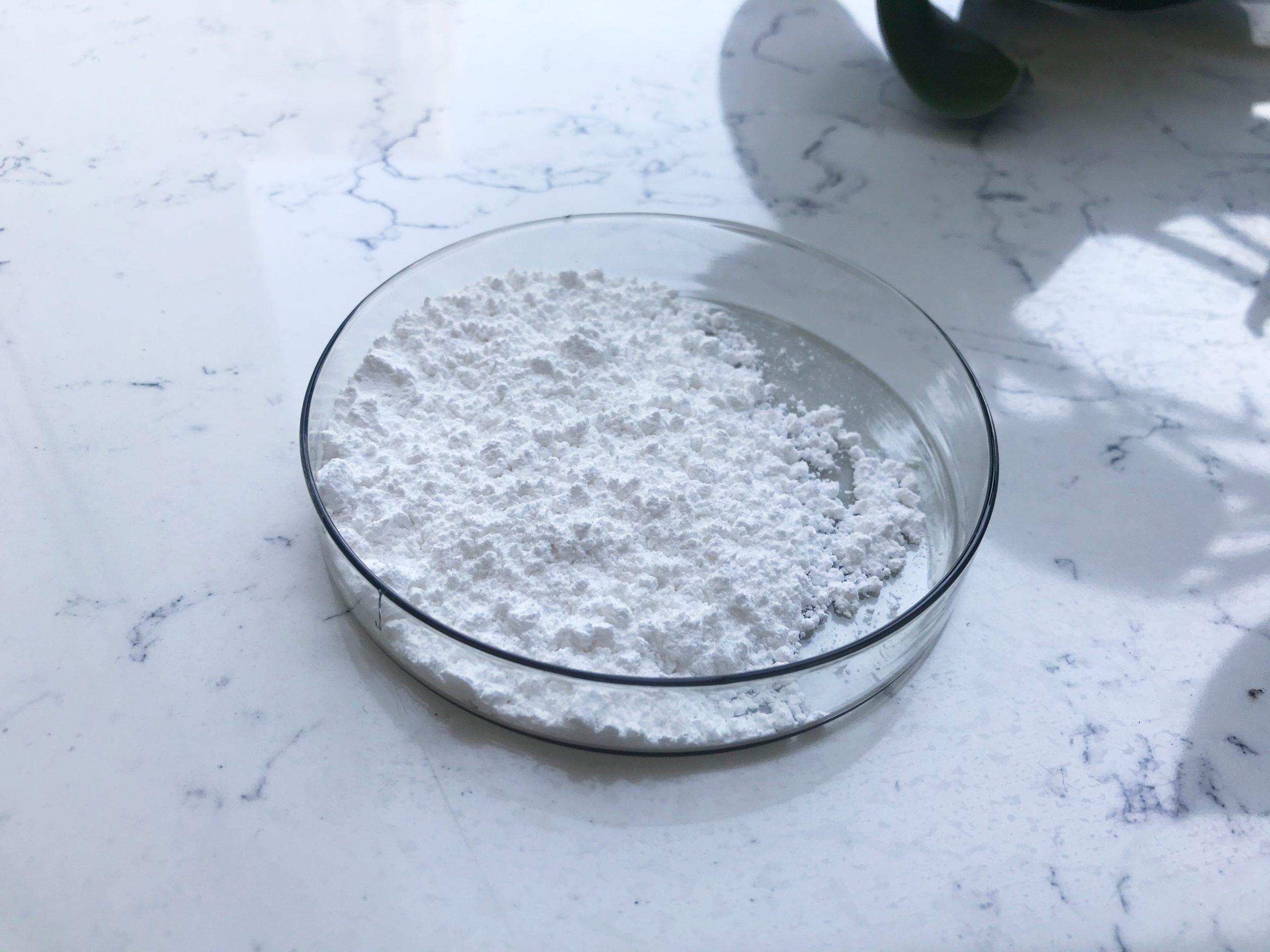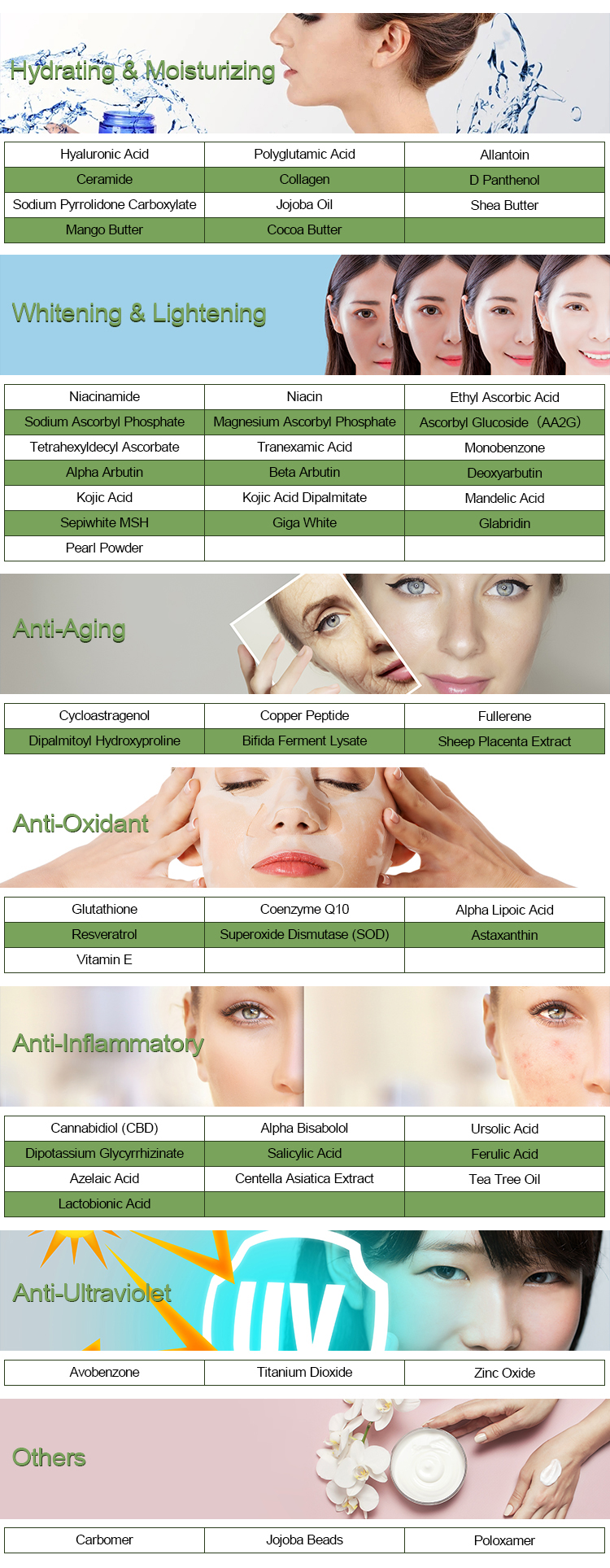Sodium Ascorbyl Phosphate (SAP) is a stable, water-soluble derivative of Vitamin C (ascorbic acid) commonly used in the cosmetics and skincare industry due to its antioxidant and skin-rejuvenating properties. Here’s some information about its chemical structure and physical properties:
Chemical Structure of Sodium Ascorbyl Phosphate:
Sodium Ascorbyl Phosphate is a salt of ascorbic acid (Vitamin C). Its chemical structure is as follows:
Molecular Formula: C6H6Na3O9P
IUPAC Name: Sodium [(2S)-2-[(1S)-1,2-dihydroxyethyl]-4,5-dihydroxy-3,6-dioxocyclohexa-1,4-dien-1-yl] hydrogen phosphate.

Physical Properties of Sodium Ascorbyl Phosphate:
Appearance: Sodium Ascorbyl Phosphate typically appears as a white or off-white powder.
Solubility: It is highly water-soluble, which makes it suitable for use in various skincare and cosmetic products.
Stability: One of the primary advantages of Sodium Ascorbyl Phosphate over pure ascorbic acid is its stability. It is less prone to oxidation and degradation when exposed to air or light. This stability allows for a longer shelf life in skincare products.
pH Sensitivity: Sodium Ascorbyl Phosphate is effective over a wide pH range, making it suitable for use in formulations with various pH levels, which can be beneficial for combining it with other skincare ingredients.
Antioxidant Properties: Like ascorbic acid, Sodium Ascorbyl Phosphate also exhibits antioxidant properties, which can help protect the skin from damage caused by free radicals and UV radiation.
Skin Benefits: Sodium Ascorbyl Phosphate is known for its ability to promote collagen production, reduce the appearance of fine lines and wrinkles, and brighten the skin. It is often used in skincare products to address concerns such as hyperpigmentation and uneven skin tone.
Compatibility: Sodium Ascorbyl Phosphate is generally well-tolerated by the skin and is less likely to cause skin irritation or sensitivity compared to some other forms of Vitamin C.
Odor and Taste:Sodium Ascorbyl Phosphate is odorless and tasteless, making it suitable for use in various cosmetic and skincare formulations without affecting the product’s scent or flavor.
Sodium Ascorbyl Phosphate is considered a gentler and more stable form of Vitamin C, making it a popular ingredient in many skincare products. Its versatility and compatibility with various other skincare ingredients make it a valuable component in the formulation of products designed to improve skin health and appearance.
The application of Sodium Ascorbyl Phosphate
Sodium Ascorbyl Phosphate (SAP) is a stable derivative of vitamin C (ascorbic acid) commonly used in skincare and cosmetic products due to its beneficial properties for the skin. Here are some of its applications:
Skin Lightening: Sodium Ascorbyl Phosphate has skin-lightening properties. It can help reduce the appearance of dark spots, hyperpigmentation, and uneven skin tone. It does this by inhibiting the production of melanin, which is responsible for skin pigmentation.
Anti-Aging: Sodium Ascorbyl Phosphate is an antioxidant, which means it helps protect the skin from free radicals and UV-induced damage. This can lead to a reduction in the signs of aging, such as fine lines and wrinkles.
Collagen Production: It promotes collagen production, which is essential for maintaining skin’s elasticity and youthful appearance. Increased collagen can help in reducing sagging and wrinkles.
Acne Treatment: Sodium Ascorbyl Phosphate has anti-inflammatory properties. It can help calm irritated skin and reduce redness. Furthermore, it can also inhibit the growth of acne-causing bacteria.
Wound Healing: Some studies suggest that Sodium Ascorbyl Phosphate can aid in wound healing, making it a useful ingredient for products designed for skin recovery.

UV Protection: While not a substitute for sunscreen, Sodium Ascorbyl Phosphate can enhance the efficacy of sunscreens when used together. It offers an extra layer of protection against UV damage.
Stable Formulation: Unlike pure ascorbic acid, Sodium Ascorbyl Phosphate is more stable and less prone to oxidation. This means it has a longer shelf life and is less likely to lose its effectiveness over time.
Hydration: Sodium Ascorbyl Phosphate can improve skin hydration and moisture retention, making it beneficial for dry and dehydrated skin.
Compatibility: It is generally well-tolerated by most skin types, including sensitive skin, as it is less acidic and less likely to cause irritation compared to pure ascorbic acid.
Sodium Ascorbyl Phosphate is typically used in various skincare products, including serums, moisturizers, and creams. If you’re considering using products with Sodium Ascorbyl Phosphate, it’s essential to choose high-quality formulations and consult with a dermatologist, especially if you have specific skin concerns or conditions. As with any skincare ingredient, individual results can vary, so it’s essential to be patient and consistent in your skincare routine to see the desired effects.
